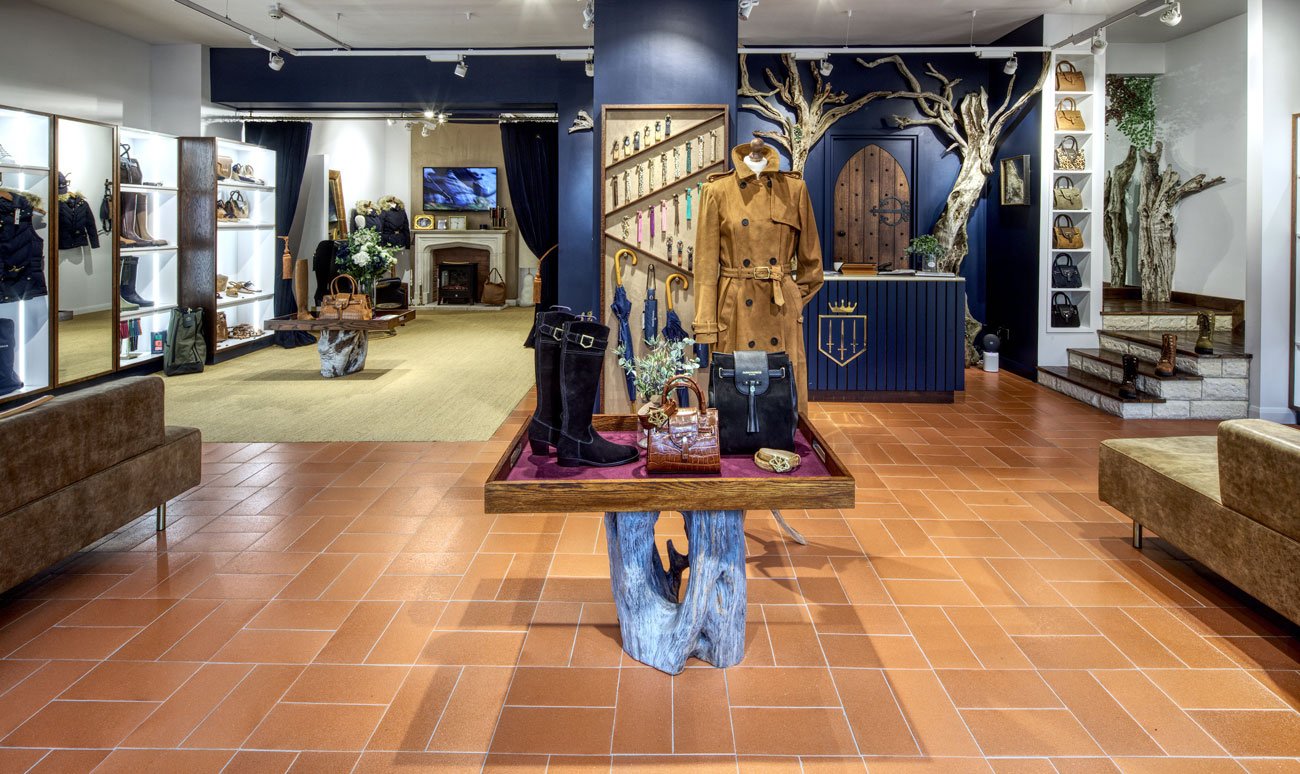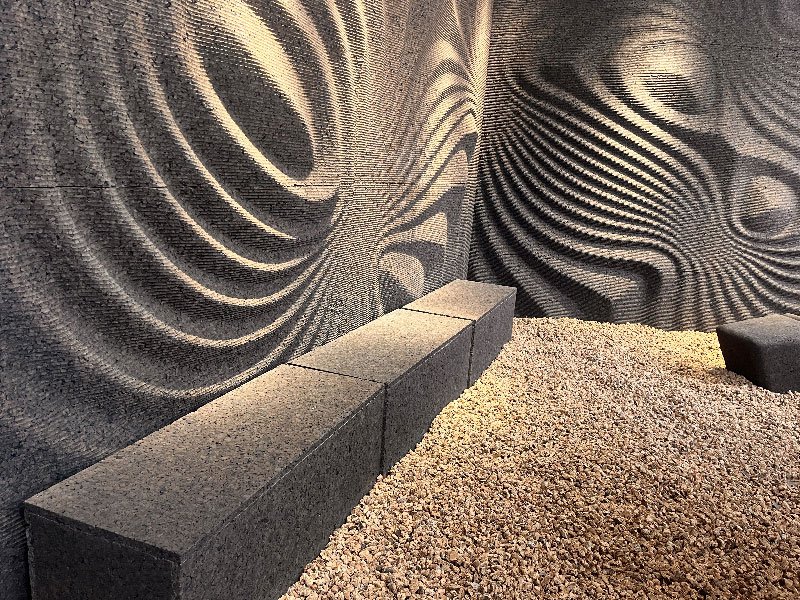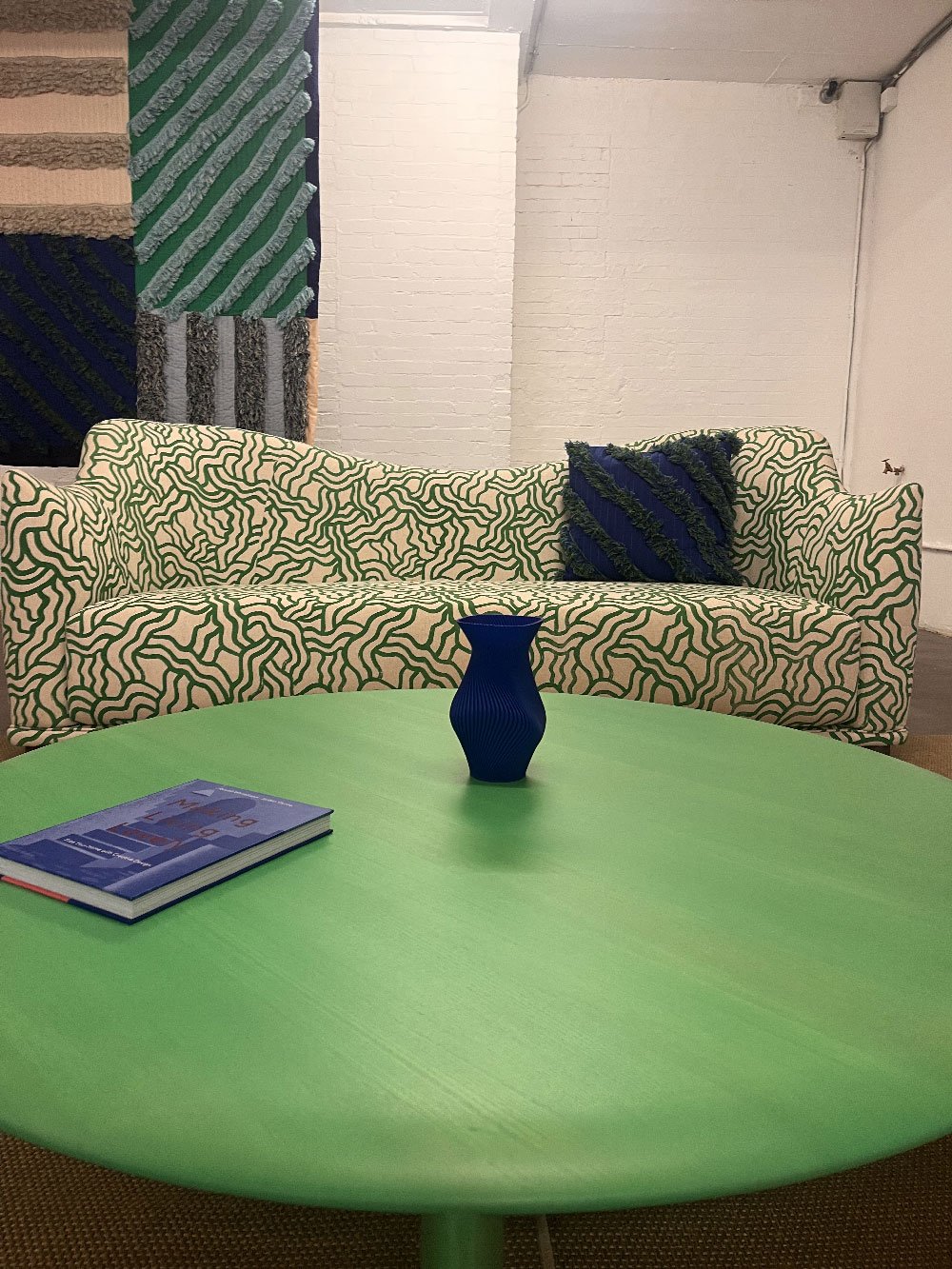INSIGHT
Top 3 benefits of interior design to elevate your brand
Defining and expressing a brand universe through design
Brand literate interior designers seek to, in the first instance, define the brand world, it's recognised codes and aesthetic platform as the first step in ensuring that visual direction is one which will express, amplify and reinforce the world of the brand. This is essential to ensure that the resulting outcome represents an investment in brand building and is a true and authentic representation of the brand universe.
The objective is to ensure that customers instantly recognise the brand, irrespective of scale or location. For example the retail brand concept we created for Jo Malone became the instantly recognised blueprint for the brand, whether it was a stand alone store on a high street or mall or a counter or bay in a department store or airport. This meant that there was instant recognition globally whether that was in a mall in Dubai or a department store counter in the USA.
Jo Malone store London inspired by the iconic packaging designed by Caulder Moore
This instant recognition is essential in making the brand feel and seem familiar and 'known', building reassurance and brand trust. With this in mind, we have explored what are the benefits of interior design?
1 : Building brand community benefits
Physical stores are vital building blocks in growing and deepening bonds within the brand community. This is why many brands such as Glossier have invested in physical retail. As a brand which had built the equity and the value of the brand on its close, engaging and interactive relationship with its customers, even to the extent of developing and attuning new products in response to feedback from their brand community, they recognised the enhanced value that physical retail stores could play in building and growing their brand community and the richness and depth of the relationship with their customers.
The interior design of Glossier stores not only reflecting the distinctive aesthetic values of the brand, but also created the valuable social feeling by designing and devoted space to areas for customers to mix, dwell, linger and bond with the in store team and brand ambassadors.
Our client, Fairfax & Favor, were very clear about the role that the interior design of their stores would play in not only expressing their country chique style aesthetic sensibility, but also in ensuring that spaces and rooms were devoted to VIP areas and furniture and seating for customers to relax and dwell. The response from their brand community has been enormously positive as customer now feel that the stores give a human, in person, up close and personal dimension to the brand, where they feel they are getting close to the brand and feel that they know the brand better. In addition, because each store is linked in some way through unique interior design details to the individual local area, there is an enhanced sense of discovery which encouragers their brand fans and brand community to visit each store to discover what is new, distinctive and different, and builds a sense of individuality, a brand with a strong, unique personality and creative spirit.
Inviting VIP room with lifestyle influences in Fairfax & Favor, Helmsley
Cosy VIP spaces in the latest Fairfax & Favor store, Bakewell
Interior details inspired by St Edwards church in Stow-on-the-Wold, Fairfax & Favor store designed by Caulder Moore
2: Hiring a professional interior designer - why it's worth it
Professional expertise and industry specialism
The investment in an interior design project is significant.The capital costs of reinventing interior environments is one that businesses often undertake as an essential part of a brand reinvention or revitalisation exercise. Often undertaken by a desire to attract new customer groups, or indeed ensure that existing customers are retained and their loyalty is reinforced by enjoying a new and exciting customer experience.
Seen through this strategic lens as a brand building exercise, and part of achieving long term strategic business gals is why businesses need to look beyond the latest design trends and engage with an interior designer or interior architect who can demonstrate deep industry experience and a qualified team of interior designers.
Effective interior design, and inspired creativity, creates an environment that elicits the desired emotional response from customers, requires not only brand understanding ofd the business vision but also expertise in spatial design and proven skills in creating the right brand ambience and atmosphere.
This expertise will include an understanding of the importance of lighting design, not only in its role of highlighting the appeal and visibility of the product, but also in creating the right mood. This is an essential part of the brief. To understand whether the desired outcome is a space which is designed to energise and excite, or to relax and slow down.
Staying abreast of latest trends and materials
The best interior designers have not only access to vast libraries of materials, but also knowledge and personal contacts of individual specialists in areas such as lighting layouts, furniture sourcing and customer technology. This ensures that they are well versed in the design process and can give the best interior design advice.
An essential role of working in the interior design industry is to attend supplier events and shows as a vital way of staying in touch with new materials, particularly those material innovations in the sustainability spaces such as the London Design Fair.
Cork Senses Lounge at London Design Fair
You can sit with us at London Design Fair
Mushlume Lighting at London Design Fair
3: Establishing brand identity through interior design
Brand consistency and visual identity
The role of the interior designer is not only to express the brand values, vision and mission of the business, but to ensure that the design look and feel is distinctive, and helps the brand to set itself clearly apart in the market, and is in some way 'own-able' to the brand. This is a vital way to build brand equity and value through partnering with expert and skilled professional interior designers.
The best interior designers possess creativity, and expert knowledge of the market, and therefore understand how to ensure that the concept that they create is unique and distinctive, making a strong commercial impact and driving increased brand awareness. This is an essential part of creating a strong visual identity through interior design projects.
Crafting unique brand experiences
Increasingly brands are looking for interior designers to employ creativity to explore how their spaces delivers an engaging and memorable brand experience. Environments are not just spaces to display product or serve food and drink, but to offer so much more, an experience which is aligned with, and exceeds, heightened and elevated customer expectations. This has been a significant and growing trend in recent years, and is predicted to become even more important in the future as businesses invest in professional interior design expertise.
The bar in customer experience is being raised globally on a consistent basis. This means that businesses and interior designers have to consider more innovative and bold thinking in order to make an impact and achieve cut through in the market.
This is why the importance of storytelling in brand marketing is set to increase. This renewed focus on brand marketing was a central theme in the recently published BOF (Business of Fashion) The State of Fashion for 2024 in collaboration with McKinsey & Co. They reinforce the importance of responding to the customer desire for authentic and consistent brand stories, with the success of purpose led brands such as Patagonia as proof of the increased importance of engaging with customers in a way where the target customer identifies with, and shares the values and beliefs of the brand.
Consequently the importance of brand storytelling being translated by interior into a compelling narrative in the customer experience is a powerful creative tool in making the experience real, tactile, memorable, effectively bringing the brand story to life.
This is a vital way of engaging emotionally in a context of ever shortening attention spans.
Immersive spaces and stores, featuring visually striking and compelling features and interactive multi sensory experience can be hugely powerful in providing memorable experiences for customers.
Many brands have adopted the strategy of exciting pop ups to create memorable shopping moments to capture attention and play a more pervasive and intimate role in their customers lives. A wonderful example of this was Maxmara's Teddy Ten, their inventive, fun and compelling celebration of the 10th anniversary of their iconic teddy coat manifested in a travelling show of fur covered pop ups in international cities, including Chengdu and Milan, titled the Fluffy Residence. The London visit, naturally for 10 days was a wonderful celebration of the teddy coat in a furry house, complete with fur lined baths, furry Christmas tree, and fluffy bed and dining room. Videos played of life in teddy town, complete with teddy trams. There were constant queues of people there to enjoy and participate in this joyful magical experience. Children marvelled and jumped on the teddy bed and revelled in the magic mirror a gadget to generate your teddy alter ego. Everyone felt welcome, the whole experience was fun, immersive, playful cosy, welcoming and inclusive. Supremely tactile, with people touching and stroking the fluffy objects and surfaces, including the fur covered exterior. Testament to a bold vision, perfectly on brand, and bringing a new audience to share in the fun.
Maxmara's Teddy Ten, Fluffy Residence
Maxmara's Teddy Ten, having fun exploring the furry house
To summarise the benefits of employing a professional, skilled and experienced interior designer one of the numerous benefits is that an interior architect can employ creativity and deep wide ranging expertise to demonstrate the art of the possible, beyond the original vision of the client in a given space.
Interior design expertise also means that they can employ their design industry knowledge to manage client expectations and client requirements about what is feasibly achievable for the client's budget. Furthermore, costly mistakes can be avoided, and with experienced proper planning, can save the client not only time, but money.
As outlined above a good interior designer will use their aesthetic sense and creativity to interpret the client's requirements in the context of long term strategic and business goals, ensuring that the result contributes directly to brand equity, and enhanced and deeper customer relationships.
It is a hugely exciting time as astute clients are investing in brand marketing and employing interior spaces in more inventive and targeted ways, from pop ups to permanent stores to go where their clients are. A wonderful example of this is the ways in which many luxury labels are popping up in hotels that their clients visit, and in holiday locations seasonally to capture the mood of a certain place and time. These initiatives include Fendi, translating their design aesthetic to design a beach club in Marbella, and Lora Piana's beach-club and boutique in Saint Tropez.
Interior architects with experience in both retail and hospitality can also assist a client in supporting a key trend in retail which is the integration of bars, cafes and restaurants in the store space, such as in the Dior flagship in Paris, and in pop up form the roll out of the Prada pop up cafe in key locations like Harrods London.
Tranquil garden inspired bar area in Dior Flapship, Paris
Elegant cafe inside Dior Flagship, Paris
All of these initiatives prove the power of the physical environment in expressing a brand spirit in ways that are compelling, unexpected, and create lasting memories and unforgettable moments.











